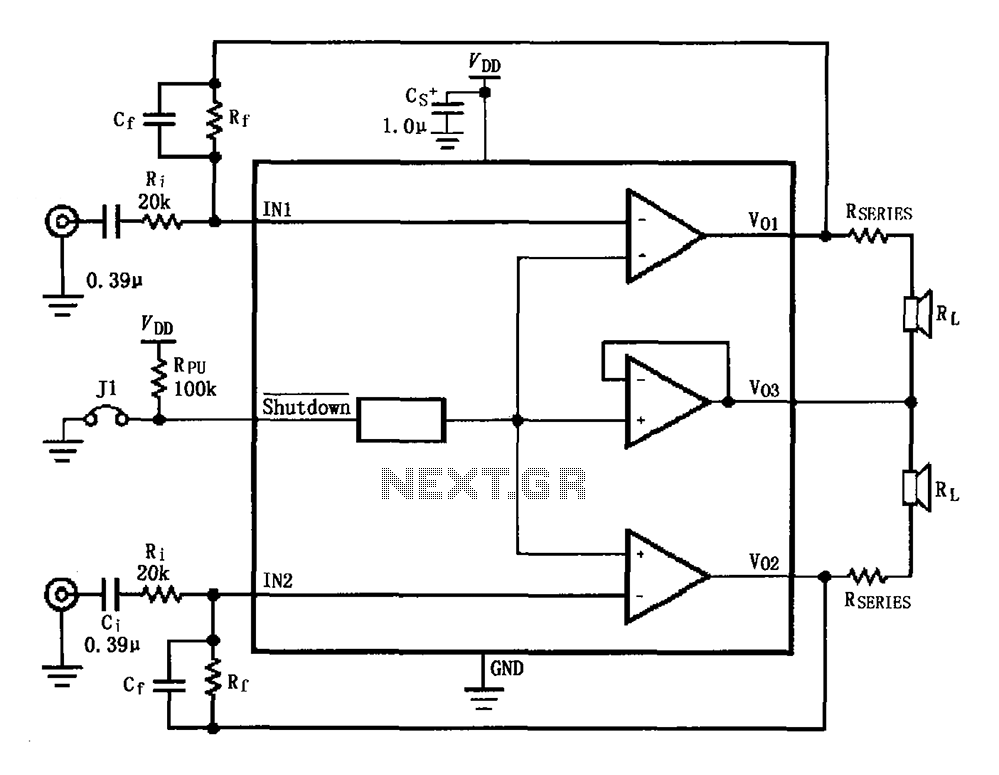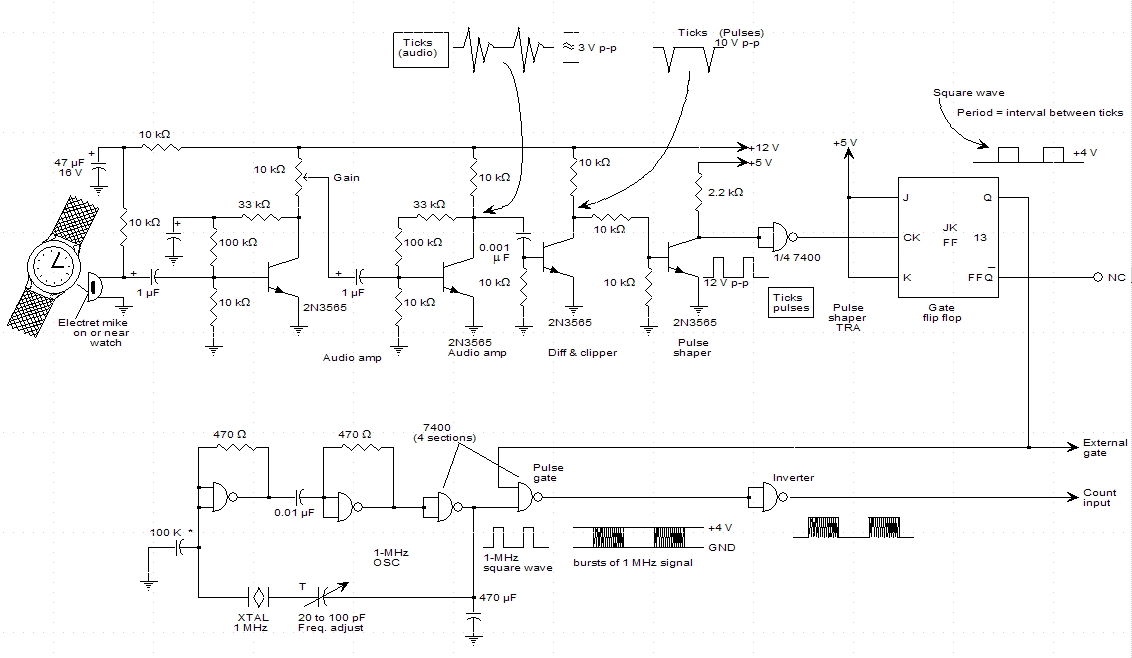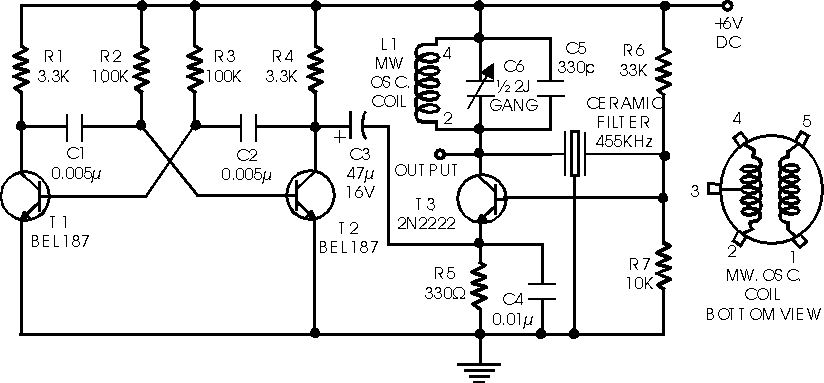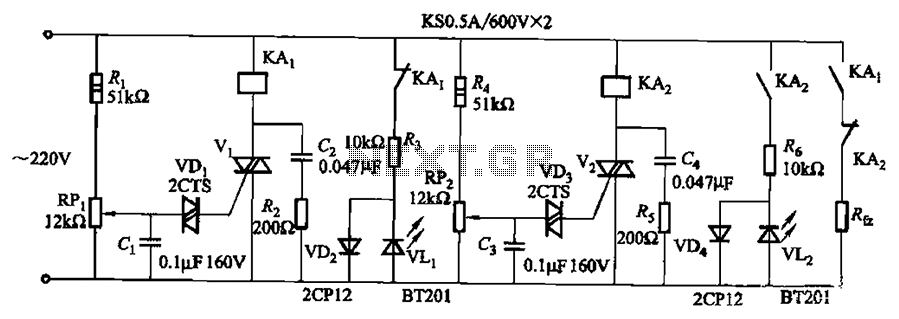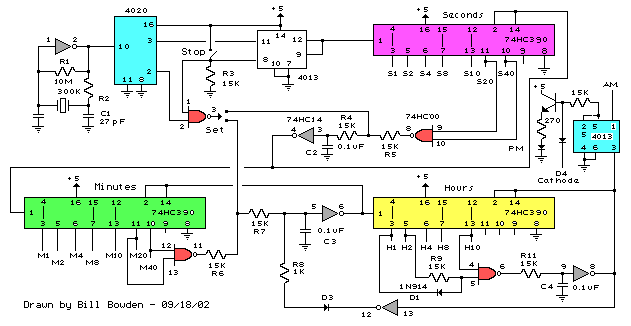
voltage conversion circuit composed of VFC320
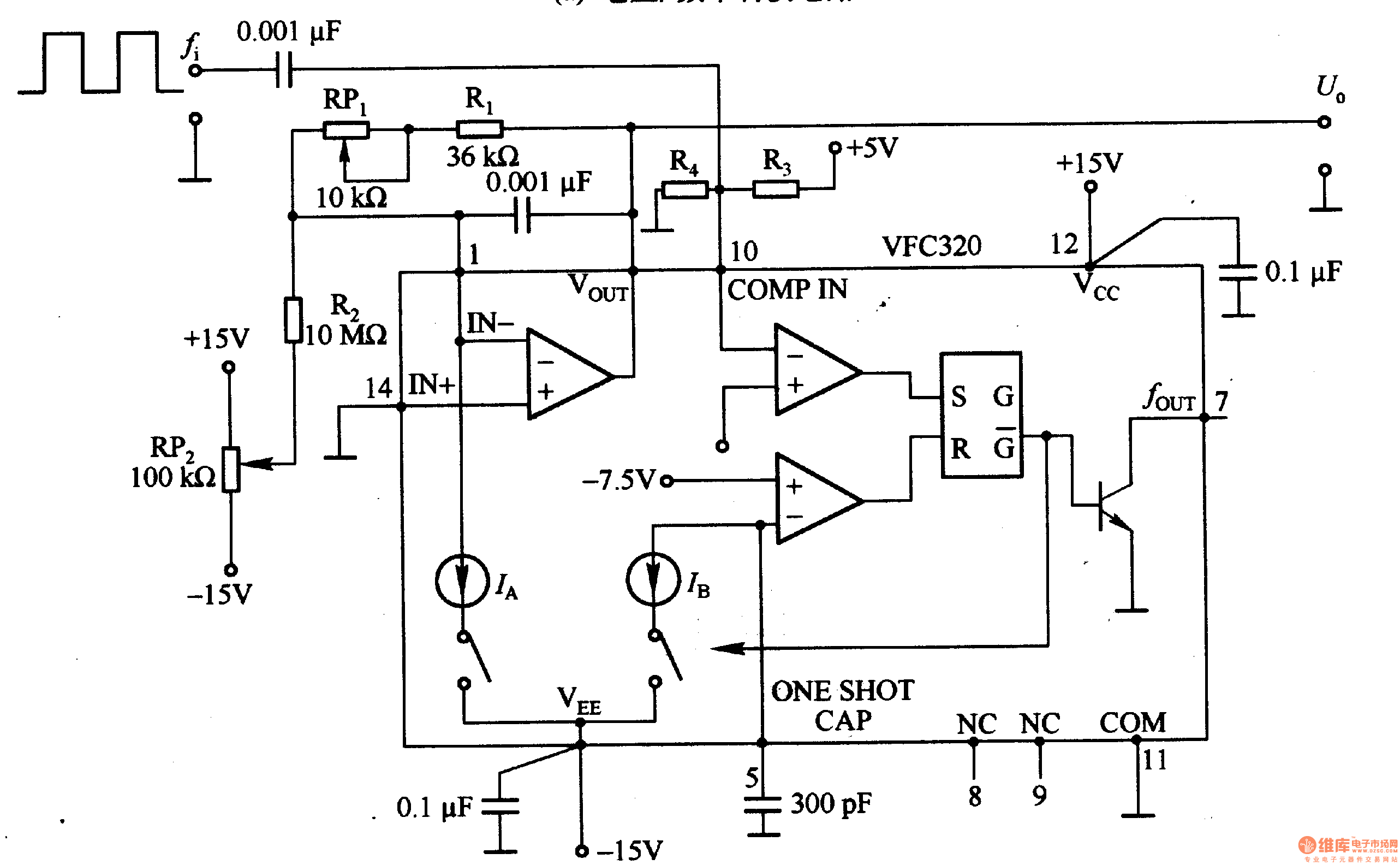
Figure 1-22 (a) illustrates a circuit that converts an input voltage of 0 to +10V (Ui) into a pulse with an output frequency ranging from 0 to 100kHz. In this configuration, pin 7 of the VFC320 is connected to a resistor, allowing for direct interfacing with standard logic levels. Figure 1-22 (b) depicts a circuit designed to convert a pulse with an input frequency of 0 to 100kHz into an output voltage (Uo) that ranges from 0 to +10V.
The circuit in Figure 1-22 (a) utilizes a voltage-to-frequency converter (VFC), specifically the VFC320, which is designed to generate a frequency output proportional to the input voltage. The input voltage is applied to the VFC320, which modulates the output frequency based on the input signal. The output frequency can be adjusted by changing the values of the resistors and capacitors in the circuit. The connection of pin 7 to a resistor enables the output to interface seamlessly with standard digital logic circuits, allowing for further processing or control applications.
In Figure 1-22 (b), the circuit takes a pulse input with a frequency range of 0 to 100kHz and converts it back into a corresponding output voltage ranging from 0 to +10V. This conversion is typically achieved using a frequency-to-voltage converter (FVC), which processes the incoming pulse signal and generates a DC output voltage that is proportional to the frequency of the input pulse. The output voltage can be fine-tuned using additional components in the circuit, such as operational amplifiers or voltage dividers, to ensure compatibility with various applications that require a specific voltage range.
Overall, both circuits exemplify the versatility and functionality of voltage and frequency conversion in electronic applications, enabling seamless integration between analog and digital systems.Figure 1-22 (a) shows the circuit which could convert 0-+lOV input voltage Ui into the pulse with 0 -1OOkHz output frequency, and pin 7 of VFC320 is connected a resistor to directly connect to standard logic. Figure 1-22 (b) shows the the circuit which could convert the pulse with 0-100KHz input frequency into 0-+lOV output voltage UO.
If the signal counter.. 🔗 External reference
The circuit in Figure 1-22 (a) utilizes a voltage-to-frequency converter (VFC), specifically the VFC320, which is designed to generate a frequency output proportional to the input voltage. The input voltage is applied to the VFC320, which modulates the output frequency based on the input signal. The output frequency can be adjusted by changing the values of the resistors and capacitors in the circuit. The connection of pin 7 to a resistor enables the output to interface seamlessly with standard digital logic circuits, allowing for further processing or control applications.
In Figure 1-22 (b), the circuit takes a pulse input with a frequency range of 0 to 100kHz and converts it back into a corresponding output voltage ranging from 0 to +10V. This conversion is typically achieved using a frequency-to-voltage converter (FVC), which processes the incoming pulse signal and generates a DC output voltage that is proportional to the frequency of the input pulse. The output voltage can be fine-tuned using additional components in the circuit, such as operational amplifiers or voltage dividers, to ensure compatibility with various applications that require a specific voltage range.
Overall, both circuits exemplify the versatility and functionality of voltage and frequency conversion in electronic applications, enabling seamless integration between analog and digital systems.Figure 1-22 (a) shows the circuit which could convert 0-+lOV input voltage Ui into the pulse with 0 -1OOkHz output frequency, and pin 7 of VFC320 is connected a resistor to directly connect to standard logic. Figure 1-22 (b) shows the the circuit which could convert the pulse with 0-100KHz input frequency into 0-+lOV output voltage UO.
If the signal counter.. 🔗 External reference
